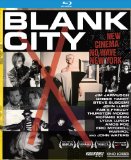| Reviews & Columns |
|
Reviews DVD TV on DVD Blu-ray 4K UHD International DVDs In Theaters Reviews by Studio Video Games Features Collector Series DVDs Easter Egg Database Interviews DVD Talk Radio Feature Articles Columns Anime Talk DVD Savant Horror DVDs The M.O.D. Squad Art House HD Talk Silent DVD
|
DVD Talk Forum |
|
|
| Resources |
|
DVD Price Search Customer Service #'s RCE Info Links |
|
Columns
|
|
|
Blank City
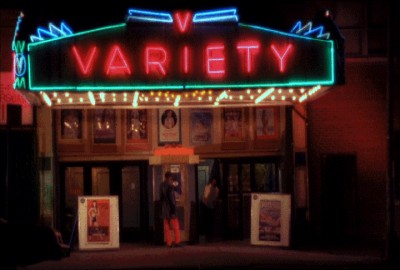
Please Note: The stills used here are taken from the film's promotional materials, not the Blu-ray edition under review.
One mark of an excellent documentary is its ability to draw the viewer into a topic, a debate, or--as in the case of Céline Danhier's Blank City--a "scene" in which he or she may not have had any very deep or sustainable interest at the outset. Danhier, a French cinephile valuing and studying an exclusively American cinematic phenomenon in a way no American probably ever would, takes us back to what was by all appearances and most accounts a dead period for cinema-as-art, that moment in the late 1970s and early 1980s when the movie studios had lost most of their Altman/Scorsese/Coppola adventurousness in favor of a creeping overreliance on the surefire, obscenely profitable blockbuster. In the wake of that sort of cultural retrenchment/regression (hardly limited, in that period, to the movies), filmmakers with more personal visions and less marketable passions could not, for the most part, even smuggle their art into a studio's product; at the same time, this was the last period, before ruinous gentrification, in which New York actually lived up to its legendary status as a scummy, crummy, bankrupt and burnt-out petri dish that could grow out the most creative, spirited, rebellious, and devil-may-care underground culture. This confluence of economic, cultural, and NY-specific circumstances gave birth to a scary monster, a rough and loose, revolving-door group of filmmakers and musicians, dubbed "No Wave" (later to become "Cinema of Transgression") by the media, that administered a painful and thrilling series of celluloid shocks to a culturally zombified city and nation. It is back toward this fecund, roiling, prolific spurt of artistic activity that Danhier turns her sharp and probing camera eye.
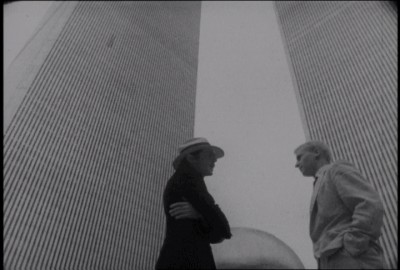
The belligerent, intelligent, often speed-revved New Yorkers that Danhier is casting a curious and fond backward glance upon (including well-known, subsequently more conventionally "successful" scenesters like Jim Jarmusch, Lydia Lunch, Steve Buscemi, Sonic Youth's Thurston Moore, Richard Kern, and part-time scene godfather/loiterer John Waters alongside those whose renown never extended too far outside the inner circle, such as Amos Poe, Scott and Beth B, Michael Oblowitz, and Nick Zedd) were themselves successors to an avant-garde for which New York had already become well-known/notorious, and Danhier does a fantastic job of giving us a visual and aural foundation of what preceded her principal subject. She sums up the icy-cool, insouciant mood of the time with a clip of a black-clad, cigarette-smoking, shades-sporting Susan Sontag getting shot by Warhol and Co. for a screen test, then demonstrates that milieu's fullest artistic flowering with a snippet of Jack Smith's Flaming Creatures. Most of the rest of what Danhier goes on to show us in fuller detail--the punkier, more nihilistic generation that followed, with a dangerous war-zone of a city around them instead of a faraway Vietnam to react against, the even more insidious Reagan in place of a Johnson or a Nixon as the-father-who-must-be-killed, and not a vestige of peace-and-love vibes anywhere in sight--is still patterned after those modes, their Warholian shells of cool cloaking miasmic creative sensibilities that produced the most Flaming Creatures-like, feverish, raw, purposely ugly (and therefore often beautiful, in spite of itself), self-consciously transgressive work--shards of skin-of-their-teeth, devil-may-care aural-visual poetry made to the highest possible standards of artistic integrity and aesthetic daring on the lowest possible budgets.
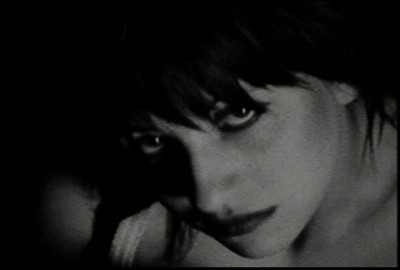
I'm sure there will be cranky No Wave purists--and, judging from some of the interviewees Danhier was able to talk into participating (particularly the scary-deadpan Nick Zedd, ex-boyfriend of Lydia Lunch and director of no-wave anti-classics like They Eat Scum and Go to Hell), it's an aesthetic mode that actively encourages cranky purism--who will find Blank City too watered-down or simple or square to do justice to its purposely abrasive subject--these filmmakers and films who, despite their turning away from the abstract, anti-narrative rules of the avant-garde establishment to make narrative features, embraced what Lunch at several points proudly calls "the ugly truth" and would surely be mortified to ever be accused of accessibility or pandering in any form whatsoever. But what Danhier has accomplished in Blank City is a remarkable feat of balancing enough accessibility for us uninitiated with a respectful, knowledgeable, thorough, and in-depth look at the history of the scene, its aspirations, its ins and outs and creative exhilarations, its incestuous infighting--all of what gave rise to and came along with being a practitioner of cinema at that time and place (which usually involved no producers or money and much illegality--real guerrilla stuff).
Danhier gives us enough prominent tips of the No Wave iceberg--Jarmusch, Waters, and Buscemi are immediately recognizable scions of the independent film world, Moore and Lunch have scads of followers and acclaim from their alternative-music careers, and many will recognize Desperately Seeking Susan director Susan Seidelman (whose Smithereens (1982), along with Jarmusch's Permanent Vacation (1980), were among the more technically proficient and widely seen No Wave features) and her future Making Mr. Right star/perennial downtown fixture/Bongwater frontwoman Ann Magnuson--as familiar-enough points of entry before taking us way down into the icy, murky depths for a generous round of clips from all the gritty, sex-and-violence obsessed, nihilistic/dystopian, virulently garish, confrontational and/or dry-ice sardonic films this group churned out. Here is a glimpse of Amos Poe's documentary-that-started-it-all, 1978's NYC music doc The Blank Generation (featuring Blondie, Television, Patti Smith, Talking Heads--the usual NY suspects--alongside other, now-forgotten rock 'n roll aspirants), and his later, grainy-black-and-white, shot-in-apartments The Foreigner (with a star turn by the always-hip-and-game Blondie chanteuse/actress Debbie Harry, who also appears as a sagely reminiscent interviewee), alongside a peek at the deliriously psychotronic wannabe-snuff-porn of Richard Kern and the disturbing, paranoid dystopias of Nick Zedd and Lydia Lunch (also a willing participant in Kern's debaucheries). And clips from Michael Oblowitz's 1978 No-Wave feature, Minus Zero that make it look like an American rendition of Godard's Alphaville. And somewhere in the middle of it all, there's also a sub-group of un-self-consciously female directors like Bette Gordon, Casandra Stark, Becky Johnston, Sara Driver, Vivienne Dick, and Lizzie Borden, who (in addition to Lunch, Seidelman, and Beth B) make the proportion of guys to gals in H'wood (then and now) look ridiculous.
It's all inextricable from the music, with Harry as the pop princess reigning over a heap of recording artists/filmmakers/actors including accomplished saxophonist/untrained actor-director John Lurie (star of Jarmusch's 1984 breakthrough, Stranger Than Paradise); composer/industrial-rock mainstay J.G. Thirlwell (whose many sonic collaborations with Lunch are the basis of an enduring subculture of their own); and kingpin of American indie-cred hip Thurston Moore, who joined in with Kern and Lunch on Sonic Youth's 1985's "Death Valley '69" video (the forerunner to Kern's long-running visual/artistic collaboration with Moore's group, who from the late '80s on went from being No-Wave nobodies to heroes of the Alternative Nation). There's also rapper Fab 5 Freddie, Harry's collaborator on Blondie's 1981 rap-pop crossover "Rapture," who recalls the surprisingly near-utopian crossover--as captured in Charlie Ahearn's 1983 graffiti-artist/hip-hop post-No-Wave extravaganza Wild Style (Ahearn is also on hand to offer his recollections)--between the impoverished, straggly, struggling white artists from downtown and the equally bedraggled and inspired rap/hip-hop scene burgeoning blocks away in the city's African-American ghettos. (The real "downtown" and ghettos are now all only a distant memory, of course, as many of the participants ruefully point out.)
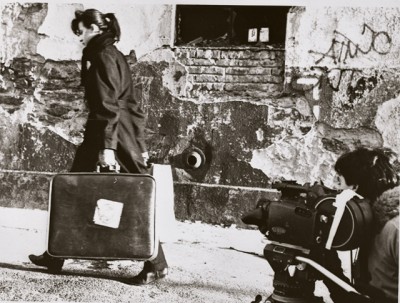
That's only a very incomplete sample of all the captivating, sometimes actually frightening/sociopathic personalities that Danhier has managed to round up; many of these people are the genuine deal, the seminal rough-riders who inspire everyone and get little of the reward (everyone knows Harry is Madonna's cooler, more cerebral, sharper forerunner, but not until I witnessed Lydia Lunch in action did I realize she has a persona later ripped off wholesale by Courtney Love for popularization). And as exhausting as wrangling and interacting with these difficult-for-a-living personalities must have been, what is even more remarkable is the seamless way that Danhier and editor Vanessa Roworth have woven their interview footage (modestly, cleanly, and unobtrusively shot on DV by DPs Ryo Murakami and Peter Szollosi) and dauntingly expansive archival material together with the honking, squeaking, doomy-robotic and/or feedback-besotted music of the No Wave into a free-flowing, relaxed, utterly engaging and entertaining history. It all coheres into a satisfactorily complete but not at all simplified picture, while at the same time opening up plenty of avenues for those so inspired to further explore the music and movies it digs up and celebrates. But even if the No Wave films, music, and their makers don't appeal to your sensibility, Blank City also works as just an interesting story well enough told that it allows the film to stand on its own, not relying upon the already-converted or predisposed for its effectiveness. Danhier has pulled off what, I imagine, most people in her connoisseurship-soapbox position--documentarians, film/music critics, your more personally invested and enthusiastic historians and sociologists--hope for: an inviting, easily crossable bridge between the rest of us and an easy-to-misunderstand but personally cherished and admired group of heroes and all their compelling experiences and artifacts.
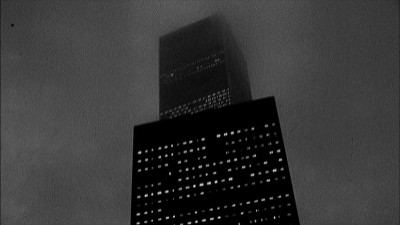
THE BLU-RAY DISC:
The AVC-MPEG4-encoded, 1080/24p-mastered transfer, at an aspect ratio of 1.78:1 (not, as the packaging incorrectly claims, 1.85:1), looks wonderful, mixing the straightforward (though nicely framed and lit) present-day DV interview footage with tons of footage from the No Wave movies that are, naturally, varying degrees of rough in their textures, all of which are well-preserved here.
Sound:The DTS-HD Master Audio 5.1 presentation is as sharp and clear as can be; the older, very lo-fi footage does not need such extravagance, of course, but the present-day interviews and the music on the soundtrack is done very right by the resonance, depth, and clarity of the uninterruptedly high-quality sound here.
Extras:--A five-minute interview with director Céline Danhier in which she talks about her own transformation from bored law student to inspired filmmaker, her self-immersion in the No Wave films (which were from well before her time, and which were evidently rather difficult to track down), and the effort of actually getting all the film's participants to say yes. She admits she's very persistent as an explanation for her success, but she also comes off here as a sufficiently smart, modest, yet confident and articulate personality that it's easy to see how even a skeptical or overbooked artist could be talked into being in her film.
--Forty minutes' worth of deleted and extended scenes are just about as compulsively watchable as the film itself, with Lydia Lunch, Amos Poe, Jim Jarmusch, John Waters, and the various others allowed to go into more depth and detail on their memories of and thoughts on the grimy, dangerous, collaborative, untamed New York they all lived and/or worked in at one time. (This segment also gets into some more depth on a figure only peripheral in the feature but well known to independent film fans: Rockets RedGlare, a downtown performance artist of the No Wave period who appeared in several of Jarmusch's films as well as Oliver Stone's Talk Radio.)
--About four minutes of outtakes featuring some of the funnier and/or more awkward moments from the interviews (one really can't know if Lydia Lunch is seriously P.O.'d when she says of Danhier, "This lady's got balls...for a chick" and challenges her interlocutor/director to a fight). This montage also features Thurston Moore relating a story that any Sonic Youth fan (or alt-rock aficionado of any stripe, really) will find fascinating, about how one night at CBGB's, he and his fellow Youth experienced a quasi-ceremonial passing of the grail at the hands of none other than punk legend (and singer/songwriter of the song "Blank Generation" itself, an anthem for No Wave if ever there was one) Richard Hell.
--The film's theatrical trailer.
FINAL THOUGHTS:Above and beyond the juicy interest of the vibrantly sordid, flailing-but-thriving rock-and-cinema "No Wave" scene from a bygone NYC that it chronicles, Céline Danhier's Blank City is simply excellent documentary filmmaking; Danhier has done the research and pounded the pavement to gather the raw materials, then spent what appears to be considerable time and effort coalescing it into a streamlined but conscientious whole. The film is the best kind of labor of love, a passion project whose passion never overrides its rigorous dedication to doing justice to its subject. It's also a wild, sometimes actually disconcerting trip back into perhaps the last pre-Manhattan-gentrification, pre-Internet vestige of truly rebellious punk-rock/art-world hybridization, and even those with only a passing interest in the scene itself will find much to marvel at and be absorbed, enlightened, and entertained by here. Highly Recommended.
|
| Popular Reviews |
| Sponsored Links |
|
|
| Sponsored Links |
|
|
| Release List | Reviews | Shop | Newsletter | Forum | DVD Giveaways | Blu-Ray | Advertise |
|
Copyright 2024 DVDTalk.com All Rights Reserved. Legal Info, Privacy Policy, Terms of Use,
Manage Preferences,
Your Privacy Choices | |||||||









